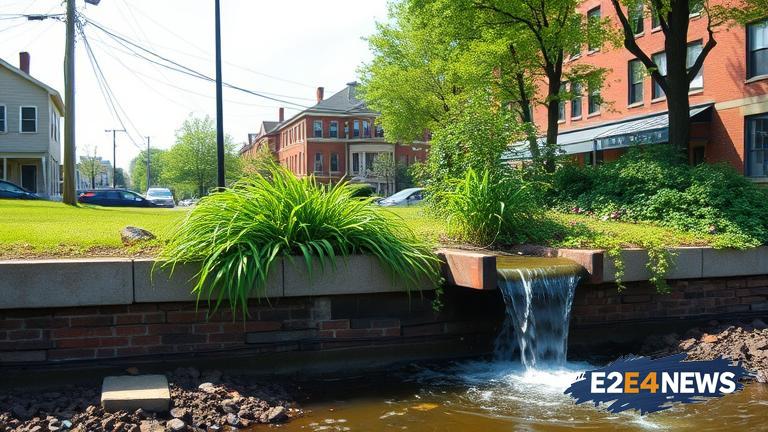The city of Columbus, Ohio, is taking proactive steps to address the issue of sewer overflows and rainwater runoff through the implementation of a comprehensive green infrastructure plan. This initiative, known as Blueprint Columbus, aims to reduce the amount of stormwater that enters the city’s sewer system, thereby decreasing the likelihood of overflows and improving the overall quality of the water. One of the key components of this plan is the use of permeable pavers, which allow rainwater to percolate through the surface and into the ground, rather than flowing into the sewer system. This approach not only helps to reduce stormwater runoff but also decreases the amount of pollutants that enter the waterways. In addition to permeable pavers, the city is also utilizing other green infrastructure solutions, such as rain gardens and green roofs, to manage stormwater runoff. These solutions not only provide environmental benefits but also offer aesthetic appeal and can help to beautify urban areas. The city’s green infrastructure plan is being implemented in phases, with the first phase focusing on the installation of permeable pavers in select neighborhoods. The city is working closely with residents and business owners to educate them on the benefits of green infrastructure and to encourage their participation in the program. The use of green infrastructure is not only beneficial for the environment, but it also provides economic benefits, such as creating jobs and stimulating local economic growth. Furthermore, green infrastructure can help to improve public health by reducing the amount of pollutants that enter the waterways and by providing opportunities for physical activity and recreation. The city’s investment in green infrastructure is also expected to have a positive impact on property values, as it can help to improve the aesthetic appeal of neighborhoods and make them more desirable places to live. In addition to the environmental, economic, and public health benefits, the city’s green infrastructure plan is also expected to have a positive impact on the city’s infrastructure, as it can help to reduce the burden on the sewer system and decrease the likelihood of costly repairs. The city is using a variety of funding sources to support the implementation of its green infrastructure plan, including grants, loans, and public-private partnerships. The city is also working closely with local organizations and community groups to leverage resources and expertise and to ensure that the plan is implemented in a way that is equitable and beneficial to all members of the community. Overall, the city’s investment in green infrastructure is a critical step towards creating a more sustainable and resilient urban environment, and it is expected to have a positive impact on the environment, economy, and public health for generations to come. The city’s green infrastructure plan is a model for other cities to follow, and it demonstrates the importance of proactive planning and investment in creating a more sustainable future. The use of permeable pavers and other green infrastructure solutions is a key component of the city’s plan, and it is expected to play a critical role in reducing stormwater runoff and improving water quality. The city’s commitment to green infrastructure is a testament to its dedication to creating a more sustainable and environmentally friendly urban environment, and it is an important step towards achieving this goal. The implementation of the city’s green infrastructure plan is a complex and ongoing process, and it will require the continued support and participation of residents, business owners, and other stakeholders. However, the benefits of green infrastructure are clear, and the city’s investment in this area is expected to have a positive impact on the environment, economy, and public health for years to come. The city’s green infrastructure plan is a critical component of its overall sustainability strategy, and it is expected to play a key role in helping the city to achieve its sustainability goals. The use of green infrastructure is a key strategy for reducing stormwater runoff and improving water quality, and it is an important step towards creating a more sustainable urban environment. The city’s investment in green infrastructure is a wise use of resources, and it is expected to have a positive impact on the environment, economy, and public health for generations to come.
